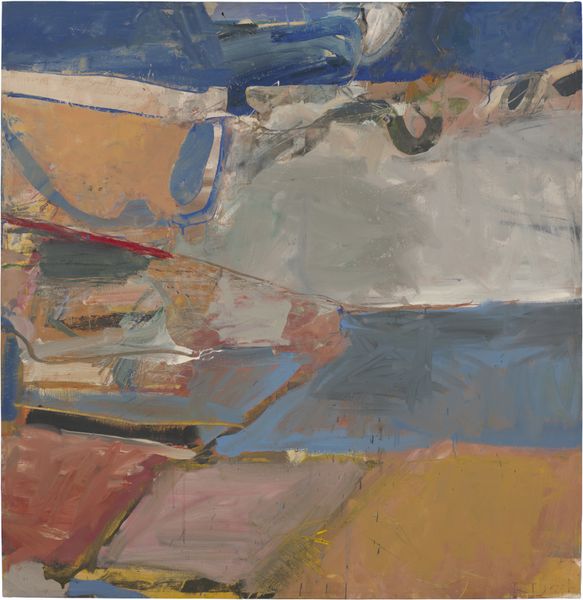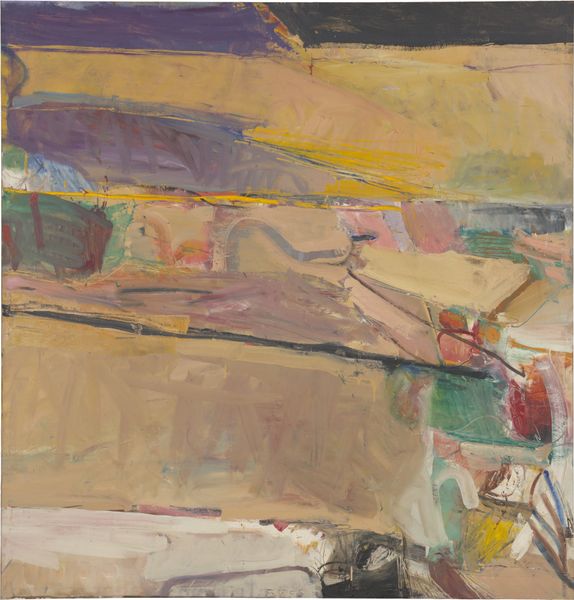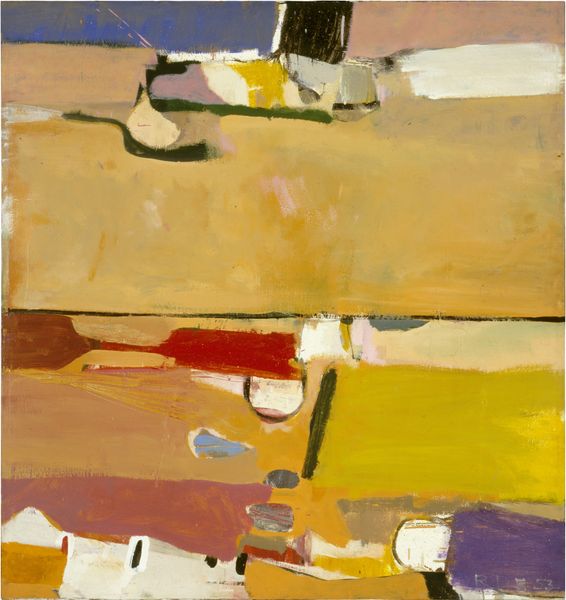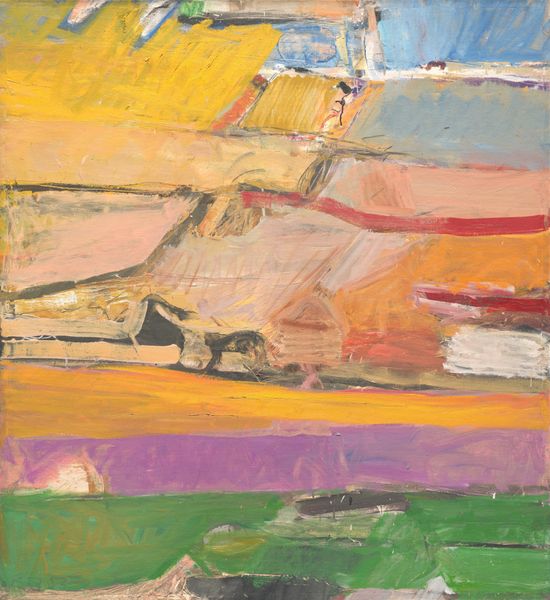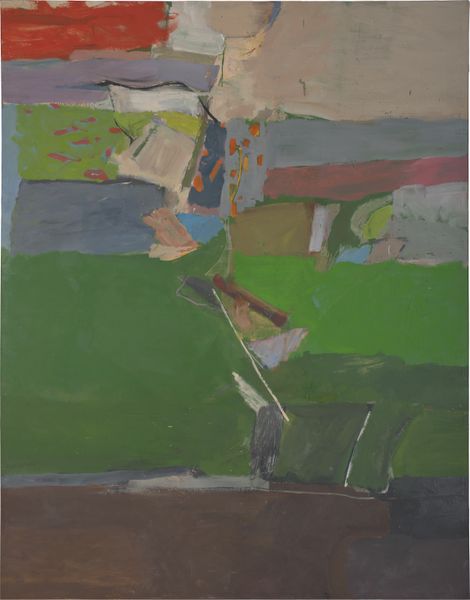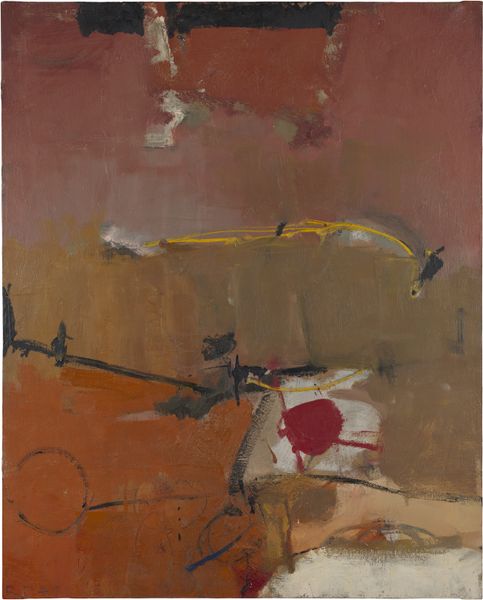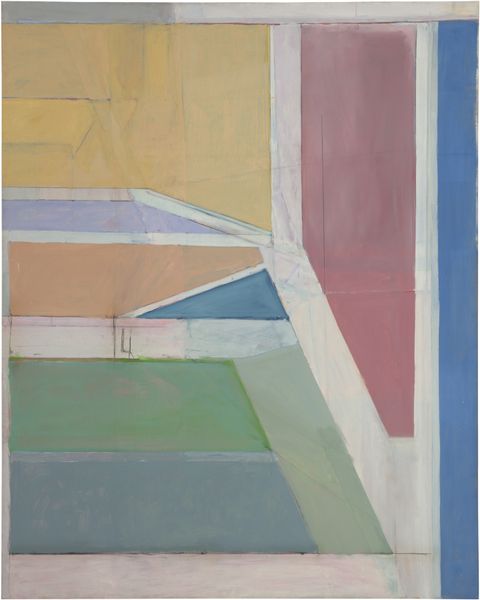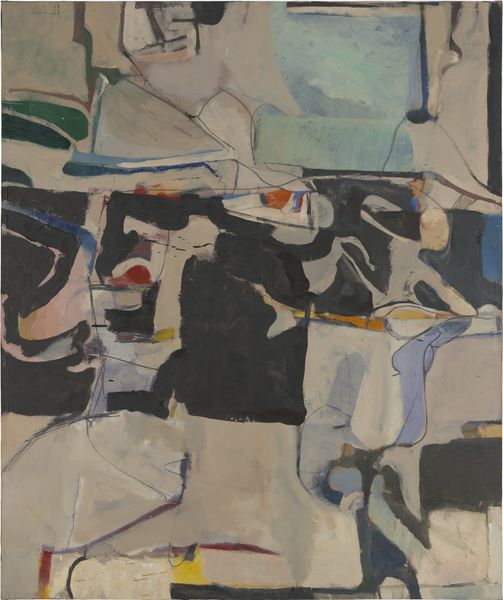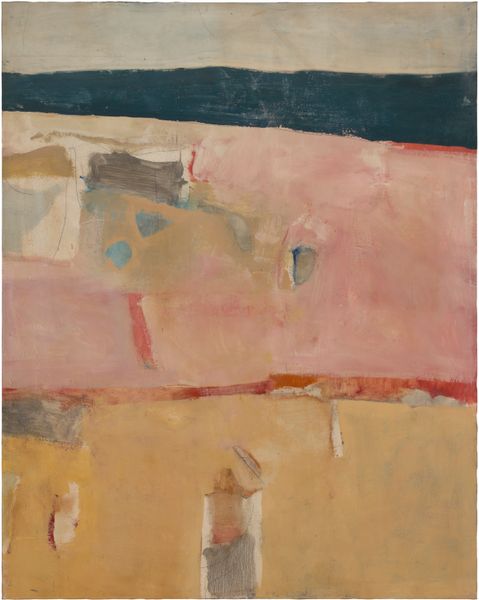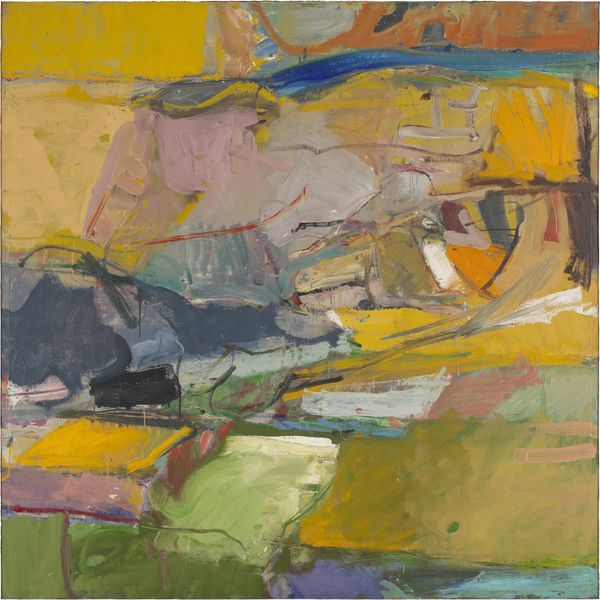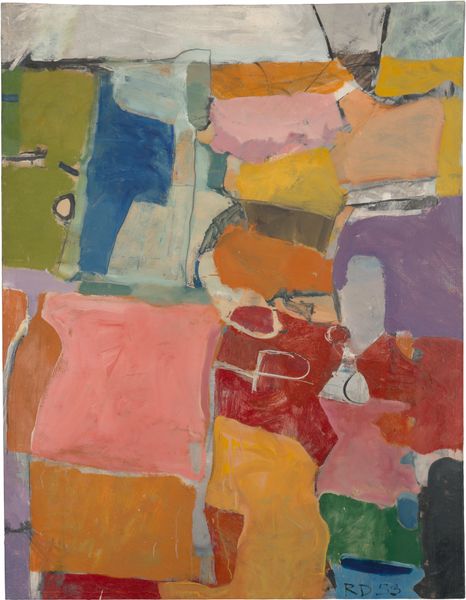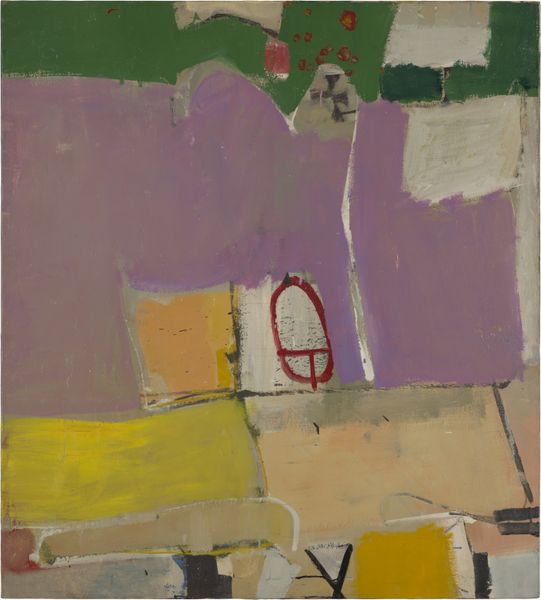
oil-paint
#
abstract-expressionism
#
abstract expressionism
#
oil-paint
#
landscape
#
oil painting
#
bay-area-figurative-movement
#
abstraction
#
modernism
Dimensions: 175.6 x 150.2 cm
Copyright: Richard Diebenkorn Foundation
Curator: Here we have Richard Diebenkorn's "Berkeley #8," painted in 1954. Diebenkorn was working firmly within the Abstract Expressionist movement at this time, creating works like this one using oil on canvas. Editor: My immediate sense is of the California landscape, or rather, a distilled memory of it. The hazy light, the dusty earth tones... it feels strangely familiar, yet utterly abstract. Curator: It’s interesting you say that, as Diebenkorn's Berkeley series, especially this particular work, reflects the artist's effort to engage with place and spatial memory. There is the suggestion of an aerial perspective here too, don’t you think? We see landscape from a disorienting viewpoint. It disrupts the conventions around where landscape is situated historically. Editor: Absolutely. And those horizontal bands, layered one atop the other… They do evoke a sense of spatial organization – or perhaps imposed order. It reminds me a little of Giorgio de Chirico and his nostalgic visions of deserted places, but instead of objects standing in for meaning, Diebenkorn offers colors that evoke a cultural response. Curator: I’d also draw your attention to the gestural brushstrokes here. Notice how the paint is applied – not uniformly, but in visible, energetic marks. That’s a key component of Abstract Expressionism as a broader aesthetic phenomenon in postwar American painting. This ties the artwork into a cultural project about expanding and reshaping American power in the cultural sphere during the Cold War. Editor: The overall palette creates such a contemplative mood, however. A kind of wistful reflection, maybe? Even though the gestures may suggest raw, bold action as you suggest, I get a sense of peaceful rumination, of time passing... a stillness. Curator: That quietness perhaps belies the underlying artistic tensions. The legacy of modernism, for one. You have European precedents around abstraction being repurposed and renegotiated within American art markets, shaping this very different sense of cultural value and production in art at this time. Editor: It’s truly intriguing how an image that seems so simple on the surface contains so many hidden cultural echoes and tensions. It’s a piece that stays with you long after you’ve walked away. Curator: Indeed. It reminds us how a single painting can capture an entire historical and cultural moment within its strokes.
Comments
No comments
Be the first to comment and join the conversation on the ultimate creative platform.
